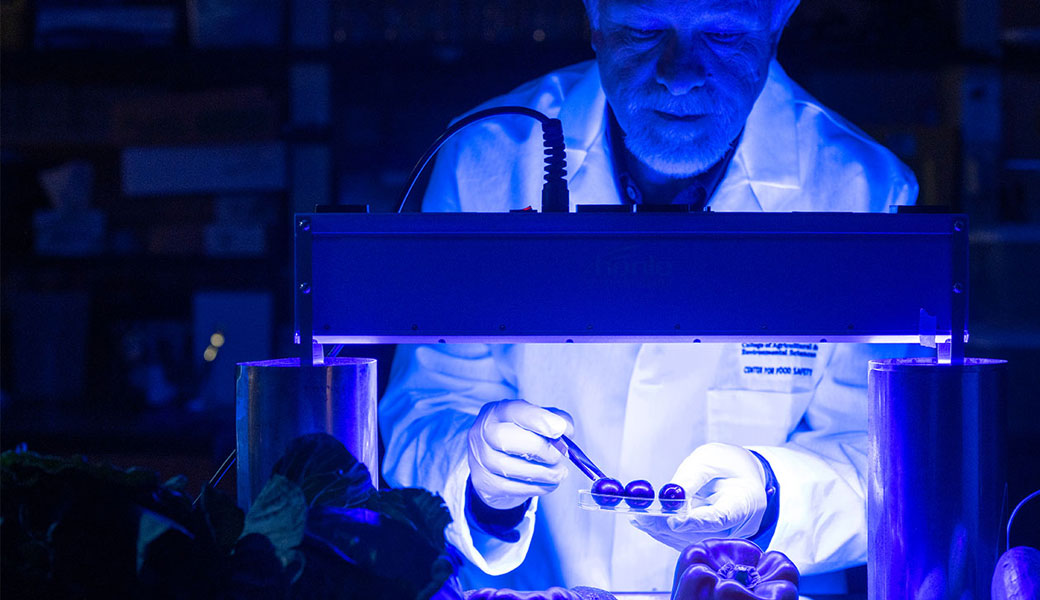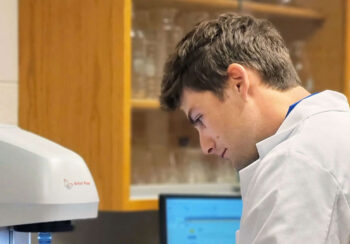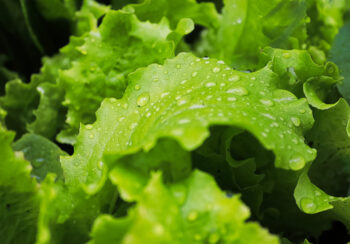From studying the way light affects foodborne pathogens to designing innovative technology for data processing, the team at the University of Georgia Center for Food Safety (CFS) is pushing the boundaries of technology to help protect a safe and secure global food chain. The center, a unit of UGA’s College of Agricultural and Environmental Sciences, is critical to both domestic and international advances in food safety—an estimated 48 million people in the U.S. alone get sick from contaminated food or beverages each year, and 3,000 die from foodborne illness. CFS is the base of operations for a team of food scientists with a wide variety of backgrounds and areas of expertise working together on the front lines of food safety research.
Shining a light on safer foods
Blue light technology is changing the way we think about our health. It is currently marketed for use in such varied applications as industrial resin polymerization, 3D printing, crop cultivation, teeth whitening, acne treatments and even as a means of controlling the spread of infections in hospitals. Now researchers at CFS are investigating ways it can help make food safer.
Known as antimicrobial blue light, or aBL, the technology relies on cost-effective LED lights. CFS Director Francisco Diez, who leads the research team, said they believe that aBL works similarly to the way visible light, such as sunlight, works on foodborne pathogens.
“The mechanism may be due to the activation of metabolic pathways that lead to the production of oxidative molecules that may damage the DNA. The effect on viruses is not yet known,” he said, adding that there is still much to explore to fully understand aBL’s effects.
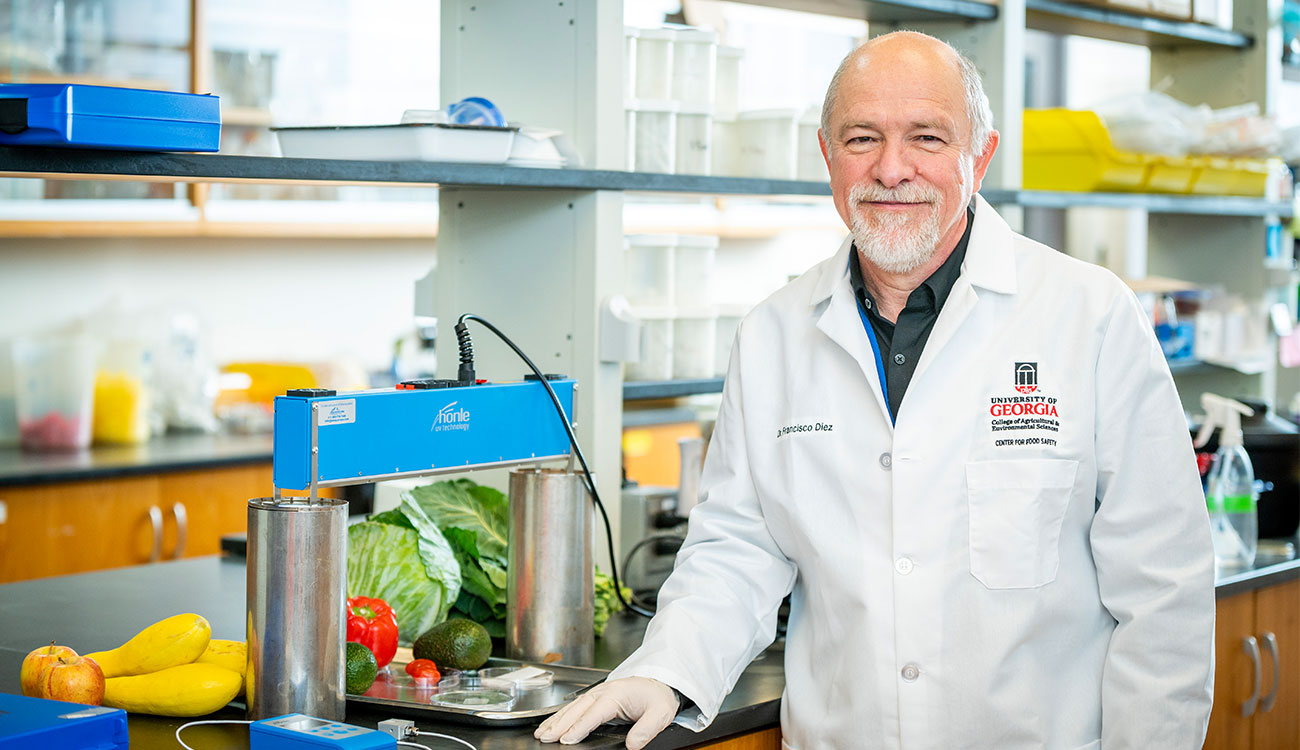
The team, including Assistant Professors Govindaraj Dev Kumar and Malak Esseili, hopes that aBL will create a low-cost and environmentally friendly means of enhancing food safety.
“We are looking at ways to improve the lethality of blue light against foodborne pathogens. Antimicrobial blue light has the potential to be used as a dry sanitizer with no harmful chemical residue,” Dev Kumar said.
The use of aBL potentially has numerous applications in food production, but the researchers will initially investigate whether it could be used in food processing facilities to sterilize hard-to-reach places where traditional sanitation methods such as cleaners are sometimes inadequate.
These inaccessible locations can sometimes harbor biofilms—clusters of microbial organisms such as bacteria—that can be difficult to eliminate. Viruses such as norovirus can also persist in these areas and can survive on various surfaces for prolonged periods.
“Such contaminated surfaces can lead to further transmission of these viruses directly to people or indirectly through food,” said Esseili, who specializes in studying viruses. “Thus, there is a need for effective decontamination strategies that can be applied continuously.”
Though they are early in their research, Diez said they have already observed consistent killing of Listeria monocytogenes cells in liquid cultures, on inert surfaces and biofilms using different blue light wavelengths and doses. The initial results were supported by a grant from the Center for Food Produce Safety.
The current study is funded through a three-year, $599,900 grant awarded by the U.S. Department of Agriculture National Institute of Food and Agriculture (NIFA).
Global danger of antimicrobial resistance
Antimicrobial resistance occurs when pathogens that make us ill, such as bacteria or viruses, evolve and become less responsive to the medications used to treat them. The connection to food safety may be surprising—antimicrobial-resistant pathogens can spread via the food chain.
Imports and exports of food can lead to an increase in antimicrobial resistance by spreading the genes that cause antibiotics to be less effective. One such gene is mobilized colistin resistance (MCR), which CFS researcher Issmat Kassem has spent his career tracking around the globe.
MCR is a gene that threatens one of the world’s most important antibiotics, colistin, by making it less effective. This matters because colistin is known as a last-resort antibiotic, used when other antibiotics fail. If it becomes less effective—or ineffective—patients are at greater risk of serious health implications such as amputations and even death.
Kassem has uncovered MCR from Asia to the state of Georgia. Antimicrobial resistance is worldwide.
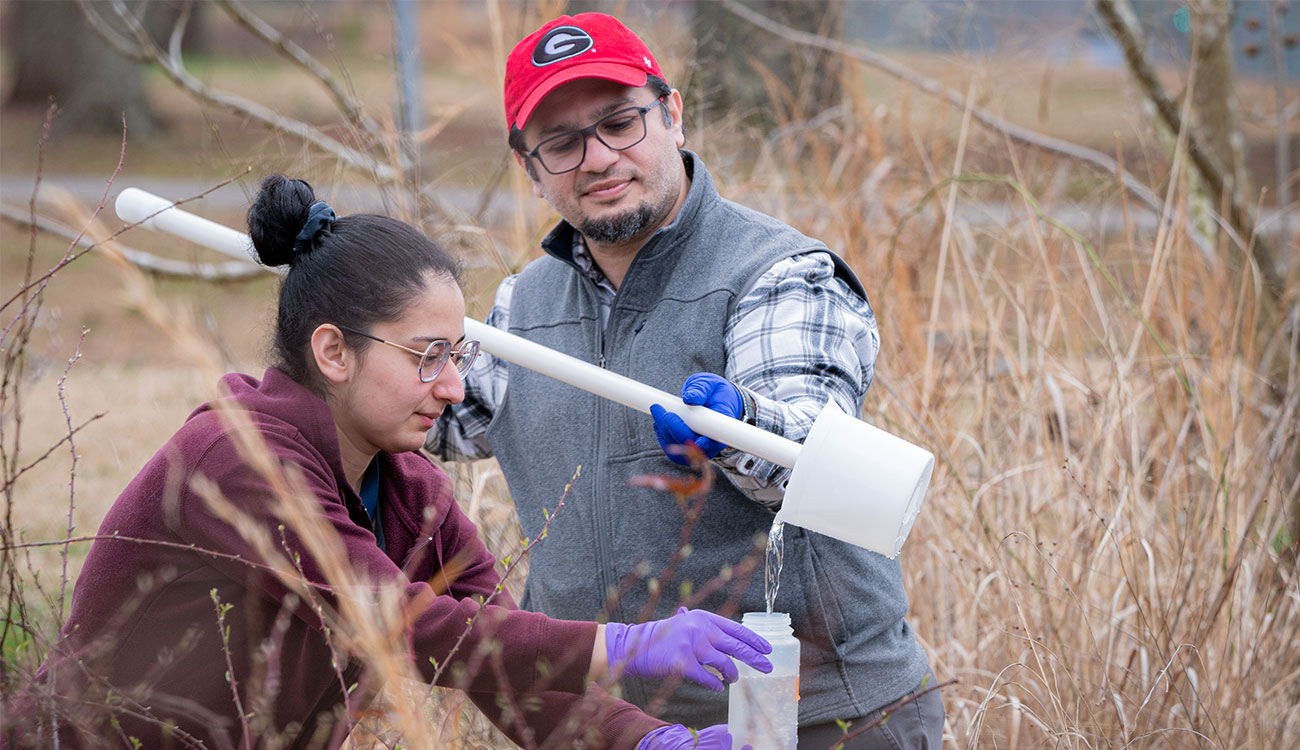
“There are no countries that are not affected by antimicrobial resistance,” Kassem said. “Even in the Arctic, it is believed that humans or wildlife might have introduced antimicrobial resistance genes there that were first detected in India.”
His efforts to stop the spread of antimicrobial resistance have led Kassem around the world. He has studied how it spreads in humans in refugee camps, in irrigation and other surface waters, in poultry farms and domesticated animals, and in aquaculture and fresh produce.
He was instrumental in Lebanon’s recent ban of the use of colistin in farm animals—a ban that was already in place in many Western countries because of the danger of its overuse. His studies in Lebanon found that colistin resistance had become widespread—in one study, he found that 98% of E. coli isolated from preharvest broiler chickens carried MCR genes.
“Science at its best, for me, is a tool of change,” Kassem said. “This is science directing policy, and the impact of the law is good for the whole region. The global implications are positive for everyone. Solving problems abroad helps these nations and prevents the spread of antibiotic resistance to other countries, including the U.S.”
The future of food safety
Standing at the cross section of microbiology and big data is the Food Safety Informatics Group. Made up of three CFS faculty members—an unusually large number for one university—the team of Xiangyu Deng, Henk den Bakker and Lee Katz (a bioinformatician at the Centers for Disease Control and Prevention and a CFS adjunct faculty member) combine their knowledge of food safety and computer expertise to help define the future of food safety.
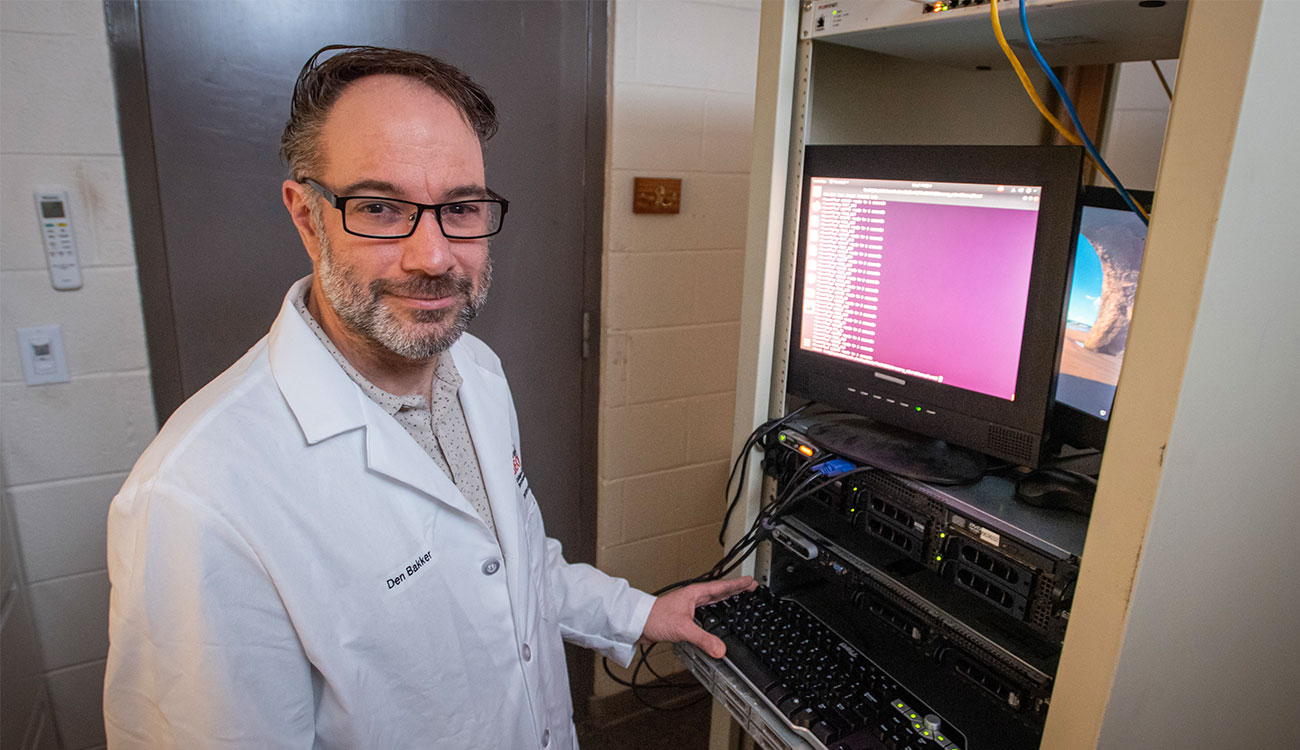
Established in 2017, one of the main advantages of the group’s work is knowing how to work with and interpret the massive quantities of collected data, whether from investigations into outbreaks or the operations of machines during day-to-day processes. Using software that looks for patterns, the researchers process the information to help agencies that regulate food safety and industries that process food to develop better ways of protecting the food supply.
One method is through software development. In the past, it could take up to three days to determine what serotype of Salmonella was involved in any given outbreak. Deng developed software called SeqSero2 which uses whole genome sequencing to determine the serotype in only a few seconds. Building on that, den Bakker wrote read-classifier software called Sepia that helps quickly sort through the multitudes of microorganisms found in a sample to determine what types of bacteria and viruses are present.
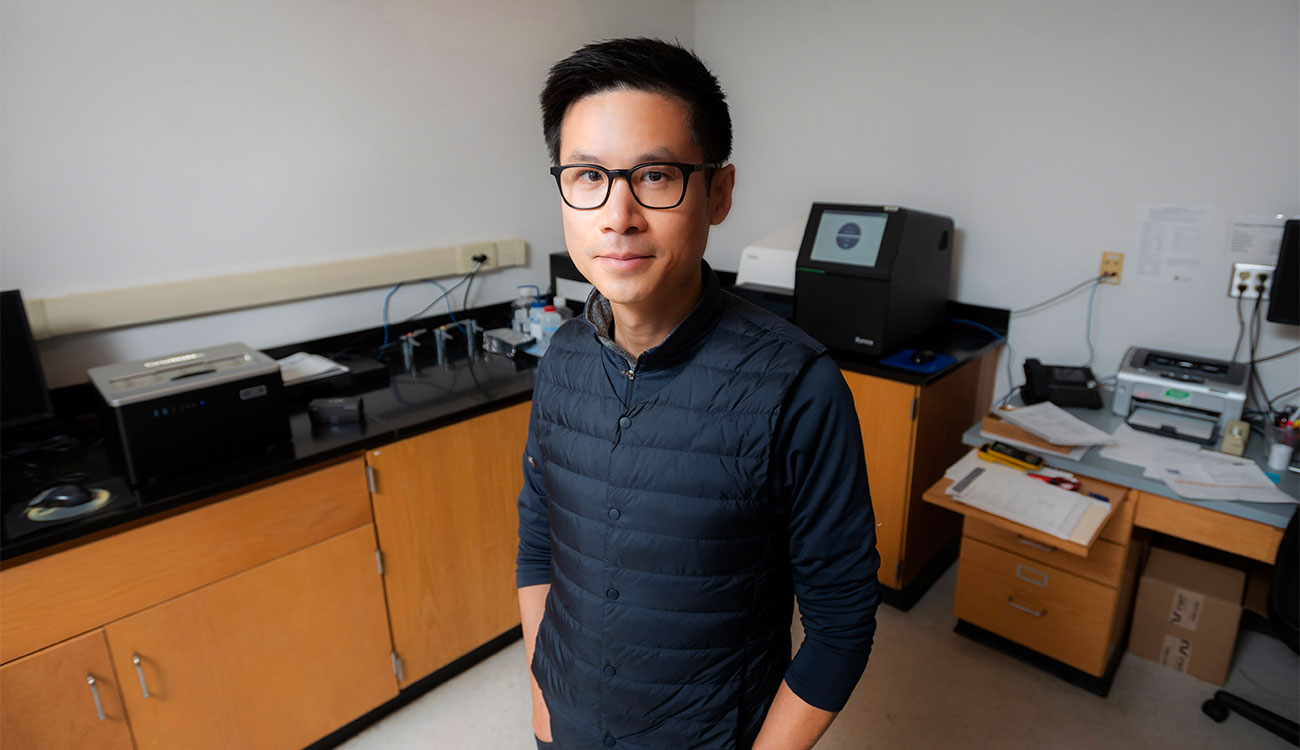
Using these and other technologies, Deng uncovered a likely source of the spread of Salmonella Enteritidis, which became a global pandemic in the 1980s, and is currently working on an $849,000 NIFA-funded study to map the microbiome of lettuce. Researchers believe that knowing more about what naturally lives on a leaf of lettuce will help them better understand how to stop future outbreaks.
In another recent study, Deng and den Bakker led an extensive genomic survey of sanitizer tolerance in Listeria, showing how big data could guide sanitation practices in food processing.
Because this research is so advanced, CFS researchers help educate stakeholders on the importance of their work and how it can lead to a safer food supply. Through its many industry partners, CFS serves as a bridge between corporations and government regulators, acting as a vital resource to cross-reference food safety information.



